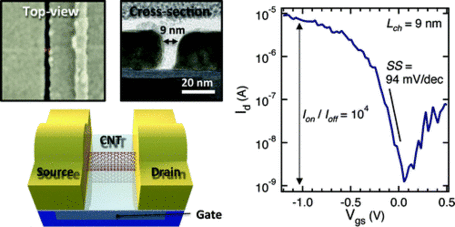9nm carbon nanotube transistor

IBM, with its staff of the best scientists and specialists in the semiconductor field, once again managed to accomplish the impossible and push the boundaries of familiar perception (not without the involvement of magic): in one of the laboratories a transistor made using the 9nm process technology using carbon nanotubes was created and tested - the very ones from which it is already possible to produce the lightest materials on the planet and build camouflage (invisible to the human eye) objects.
As we already know, the standard production of silicon semiconductors is limited by the 10NM process technology, below which the laws of physics and manufacturing technology do not allow passing, which was announced by the largest microchip manufacturer, Intel, which stamps processors using the 22nm process technology. According to experts' forecasts, already in 2015, manufacturers will run into this ceiling, and therefore, technologies and methods for manufacturing chips are now in great demand, where single transistors will be even smaller.
Smaller architecture means not only smaller chips, but also lower power consumption - IBM researchers say the experimental semiconductor showed even better results than originally expected.
According to universal expectations, it is the future of nanotubes, since they show better results than classical silicon transistors, while being smaller in size. Nanotubes are still at the very early stages of research and production, where it is necessary to overcome several important barriers: the absence of metal in the carbon compound, the reliable placement of the nanotubes in the general microchip layout. Agree, it is not easy to make a feint with your ears and place a 9nm tube on a thin layer of an insulator using a two-stage process. It is here that magic comes into play, not the one taught at Hogwarts.
And while this is only a test and an experiment, it is obvious that “carbon computing” has a future and it is they who are called to save the correspondence of Moore’s law to reality.
